Visit our blog
Equip to survive
Surviving a Natural Disaster or Civil Unrest:
Natural disasters like hurricanes, wildfires, earthquakes, floods, and severe storms are unpredictable forces that can strike at any moment.
The reality is that when the sirens blare, the sky darkens, or the ground trembles, what must follow is not a dramatic sequence of more unfortunate events but a series of concrete, time‑sensitive actions that mean the difference between life and death or the difference between a safe recovery or a prolonged crisis.
Below is a step‑by‑step guide that focuses on what ordinary people can do in the first hours, first days, and weeks after a disaster.
The advice is meant to be straightforward, accessible, and applicable to any living situation, from rural and suburban homes, to high‑rise apartments downtown.
The First Hours: Your Immediate Response
1. Prioritize Safety Over Possessions.
When a disaster strikes, the first question is: Are you safe?
If a building is stable (for example, an earthquake that left the structure intact), stay inside. Secure loose furniture with straps or tape, close windows, and shield yourself from falling debris.
If the building is compromised, move to a safer location, a sturdy building, or a pre‑identified safe room. Don’t try to salvage valuables; your life is far more valuable.
2. Assess the Situation Quickly.
Listen for official instructions: Local emergency radio stations, weather alerts, and public service announcements will tell you whether to evacuate, stay put, or seek shelter.
Check your surroundings: Is there flooding, a blocked exit, or a broken pipe? These details will help shape your next move.
3. Check Your Emergency Kit.
Households should have a basic 3 day survival kit.
What it should contain:
A 3‑day supply of water (at least 1 gallon per person per day), non‑perishable food, a battery‑powered flashlight, extra batteries, a first‑aid kit, prescription drugs, a whistle, a multi‑tool, a portable radio, and copies of important documents (IDs, insurance, medical records, drug prescriptions).
In the first hours you’ll need to move quickly; having everything in a single, easy‑to‑grab bag means you can leave without rummaging.
4. Communicate.
Contact family or friends: Let them know you are safe and where you are.
Use a low‑power device: If the cellular network is congested, a two‑way radio or a satellite messenger can be a lifeline.
5. Preserve Power.
Switch off non‑essential electronics.
If you have a portable power bank or solar charger: Charge your phone and keep it on airplane mode to conserve battery. A flashlight with a low‑power LED is often sufficient for a quick night‑time search.
In short, the first hours are a rapid triage of safety, information, supplies, and communication. Once you’ve ensured you’re not in imminent danger, you can focus on the next stage.


The First Days: Sustaining Life in a Post‑Disaster Home.
1. Water, Food, and Hygiene.
- Water: Even if the tap is still working, consider filtering it or boiling it for at least 5 minutes. Carry a container that can hold a 2‑day supply of water per person.
- Food: Stock up on canned goods, MRE, dry pasta, rice, and high‑calorie snacks. Use a portable propane stove or a small electric grill if you have access to electricity.
- Hygiene: Hand sanitizer, moist wipes, and a small plastic bin for waste keep disease risk low. If plumbing is damaged, use a bucket for a makeshift toilet and flush it away (if possible) or bury the waste, following local health guidelines.
2. Maintain Shelter Integrity.
- Roof and windows: If a windstorm or hail has damaged the roof, cover exposed areas with a tarp or a large sheet. Secure windows with plywood or sturdy boards to block wind and rain.
- Airflow and heat: In hot weather, close curtains and use fans to keep the interior cooler. In cold weather, add insulation blankets to walls and floors to trap heat.
3. Power Management.
- Prioritize: Use the limited battery life of your phone for emergency calls only. Keep the flashlight and a low‑power radio running.
- Recharge: If the power grid is still down, use a portable solar charger or a battery‑bank charger to keep critical devices alive.
4. Health Checks.
- First aid: Inspect for cuts, burns, or sprains that might have occurred during evacuation or while moving. Use the first‑aid kit to treat minor injuries.
- Mental well‑being: Disasters can trigger anxiety and depression. Keep a routine wake, eat, rest, and check the news. If you have a support network, schedule regular calls or video chats.
5. Community Coordination (communication).
- Stay connected with neighbors: Offer to share food, water, or blankets. In many cases, a neighbor might have a spare generator or a better‑sealed roof.
- Listen to official updates: Local authorities often issue safety instructions after the initial chaos. Follow evacuation orders strictly; do not wait for a “later” window.
By the end of the first few days, you’ll have established a stable, self‑contained environment that can sustain your family for a week or more, provided you manage resources efficiently.
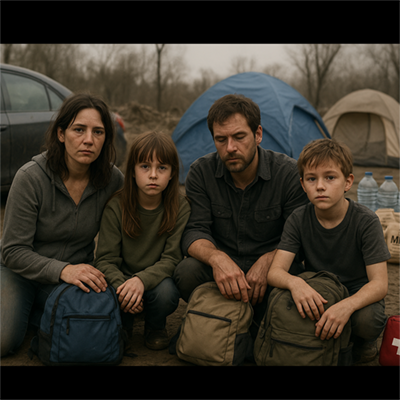
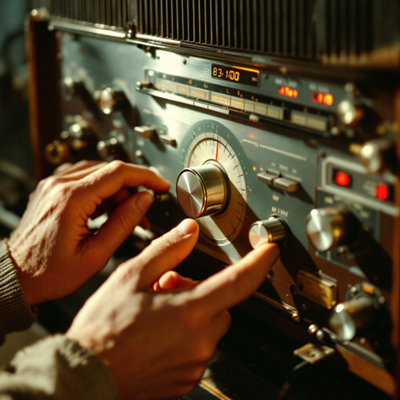
The First Weeks: Transitioning to Long‑Term Recovery.
1. Water and Food Resilience.
Find local water sources:
- Test well water or tap water for contamination. If possible, set up a filter or use bottled water as a backup.
Replenish supplies:
- Once you know which suppliers are open, start buying fresh food, clean water, and household essentials.
- If a grocery store is still closed, consider community bulk‑shopping or cooperative buying.
2. Rebuild Infrastructure.
Repair roofing and windows:
- Hire professionals or DIY (do it yourself) methods to repair and patch your shelter. Use plywood, or metal sheeting to make your sheter weather‑tight.
Restore utilities:
- As soon as possible, work with local utility companies to bring back power and gas. Keep a portable generator as a temporary solution.
3. Health and Safety Checks.
Professional medical review:
- Visit a doctor if you or anyone in your household is injured or experiencing chronic conditions.
- Psychological support:
- Post‑disaster trauma can linger. Seek counseling or support groups if needed.
4. Documentation and Insurance.
Document damage:
- Take photos and videos of structural damage, ruined possessions, and any hazardous conditions.
- File insurance claims:
- Send documentation to your insurance provider promptly. Keep receipts for any emergency purchases (food, water, temporary shelter).
5. Community Resilience Building.
Share resources:
- Offer your spare equipment, tools, or services to neighbors.
- Participate in local recovery efforts:
- Volunteer with community clean‑up projects or local emergency response teams.
- Building a social network improves your collective readiness for future events.
6. Long‑Term Preparedness.
- Update your emergency kit:
- Replace used water, food, batteries, and medical supplies.
- Re-evaluate your evacuation plan:
- Map out routes to safe locations, designate meeting points, and assign responsibilities for each family member.
- Invest in redundancy:
- Solar panels, wind turbines, or a small generator can reduce reliance on grid power.
By the end of the first weeks, you’ll have moved from survival to a stage where you can rebuild, reassess, and strengthen your household’s resilience.
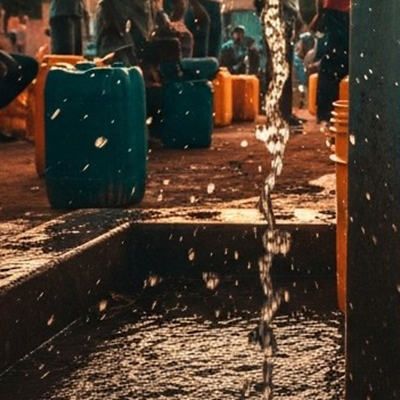
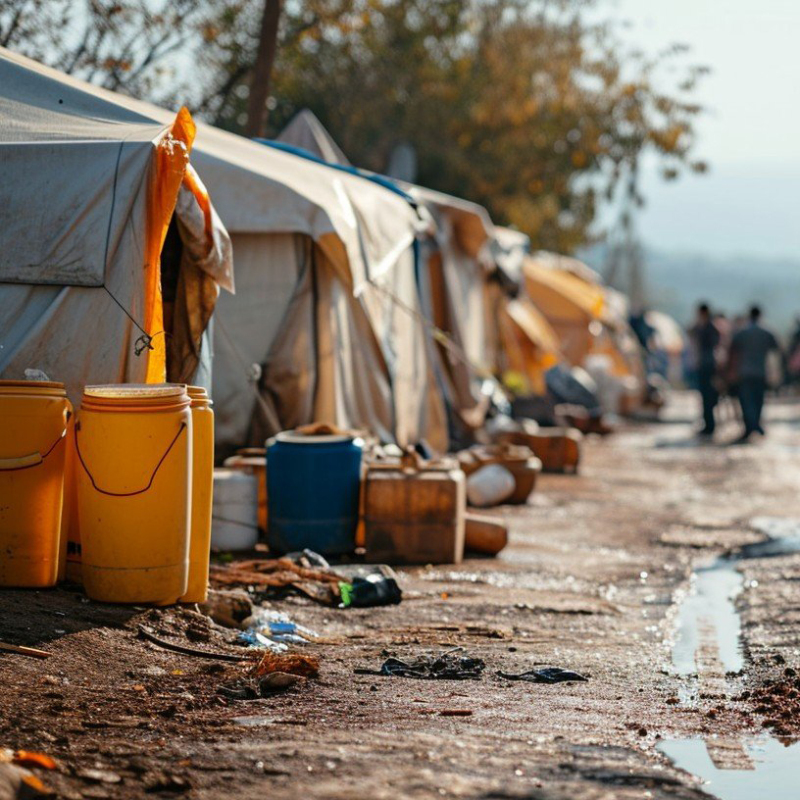
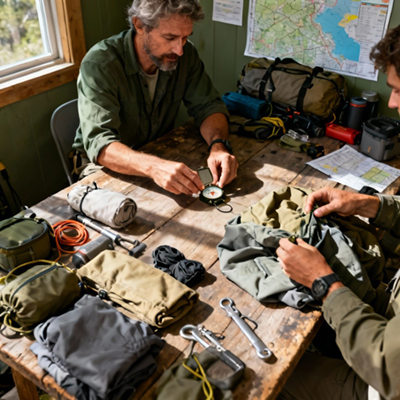
In summary, surviving a natural disaster or a period of civil unrest requires immediate action, sustained effort, and long-term planning. The initial hours demand swift decisions focused on safety, communication, and securing essential supplies.
Over the following days, maintaining shelter integrity, managing resources efficiently, and staying informed are critical for enduring the aftermath.
As recovery progresses over the following days and weeks, rebuilding infrastructure, addressing health concerns, and fostering community resilience become paramount.
By taking the steps of prioritizing safety, conserving resources, and building a supportive network, you can not only survive but foster long-term stability and preparedness for future challenges.
Remember, every action you take is a step towards ensuring not only your own survival but also the well-being of those around you.




